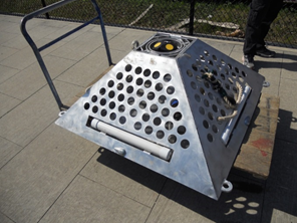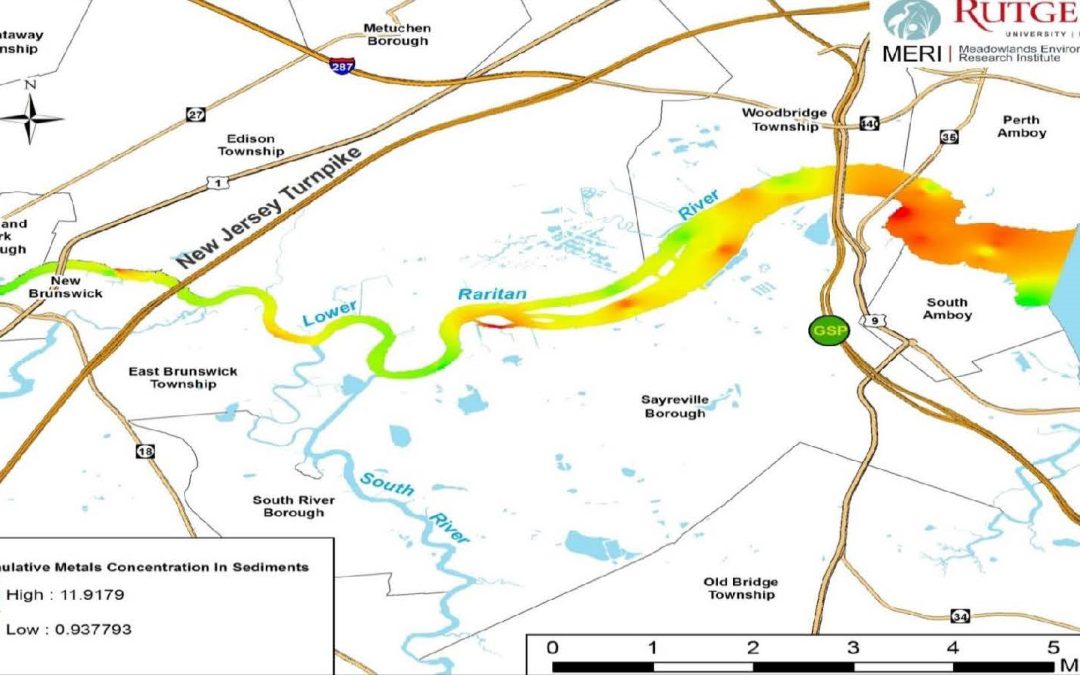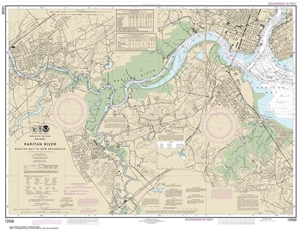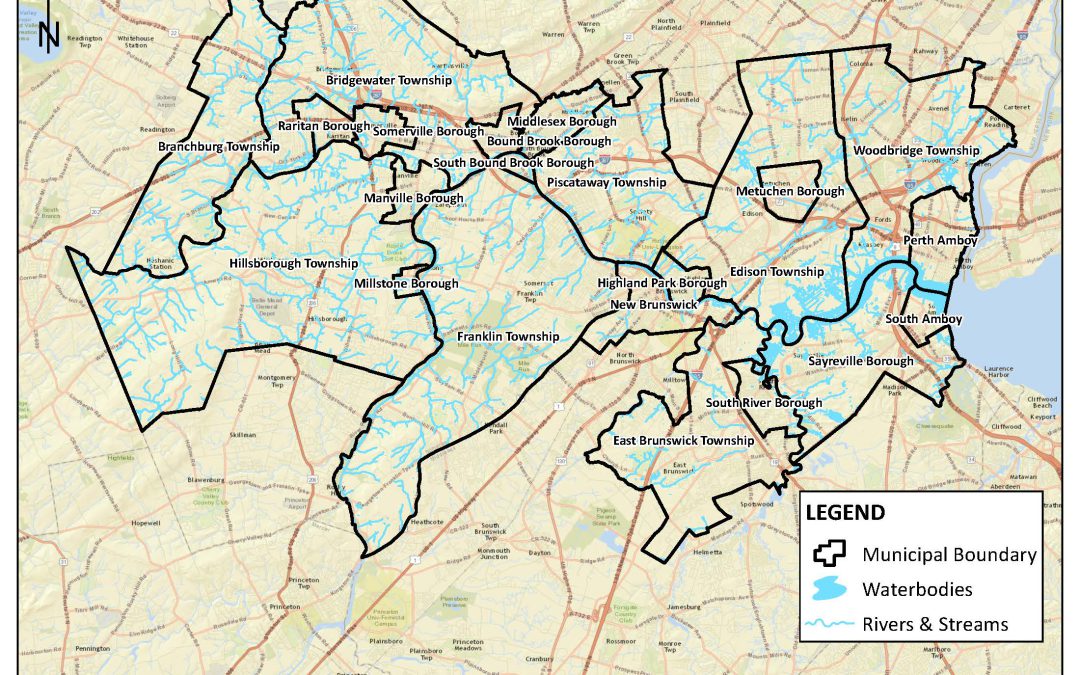News & Events
EAC releases report with colleagues at Rutgers on engagement of socially vulnerable populations in climate resilience planning
EAC staff are collaborating with others at Rutgers and the New Jersey Department of Environmental Protection to develop data, guidance and policy recommendations for integrating the needs of underrepresented and socially vulnerable populations into coastal climate change resilience planning. Supported as a Project of Special Merit by the National Oceanic...

Real-Time Hydrological Observatory and ERDDAP Interface
A real-time water quality monitoring station has been deployed on the bottom of the Raritan River in the mid-channel in front of the Rutgers Class of 1914 Boathouse (at approximately Lat/Long 40.488960, -74.33184). YSI/Xylem EXO2 Sonde sensors include: conductivity, temperature, depth, dissolved oxygen, salinity, chlorophyll, turbidity. A Sontek...

MERI – Spatial Distribution of Contaminants in Lower Raritan Sediments
This research study by the Meadowlands Environmental Research Institute (MERI) at Rutgers - Newark, aimed to fill in data gaps in river and marsh sediment contamination in the Lower Raritan River. The main tasks of this study were: (1) Measure trace metal and organic contaminant levels in surficial sediments along 20 km of the Lower Raritan River; (2)...
EAC Director Jeanne Herb joins in the Univ. of Pennsylvania Wharton School’s Digital Dialogue about improving disaster recovery of low income households
Join EAC Director Jeanne Herb in a Digital Dialogue about improving disaster recovery of low income households through The Wharton School, University of Pennsylvania, Risk Management and Decision Making Process Center. Ms. Herb joined over a dozen others to address the questions: "How can federal disaster aid programs be improved to assist low income...

ArcGIS StoryMaps of Key Raritan Indicators
Key Raritan Indicators described through ArcGIS StoryMaps by Advanced Environmental Geomatics Students In the Spring of 2019, undergraduate students in Dr. Richard Lathrop's Advanced Environmental Geomatics course developed ArcGIS StoryMaps for key indicators identified in the State of the Raritan Report, Volumes 1 and 2. The reports were written to...

EPA Rutgers Raritan Data Project
The EPA Rutgers Raritan River Project was conducted to compile data related to point source and non-point source pollution and Superfund, Brownfield and other contaminated sites into a comprehensive database. In addition, the project developed an interactive tool that assists federal, state, and local stakeholders to make decisions related to environmental...

Bloustein Local, NJMEL collaborate to promote Cybersecurity Month
To promote October 2019 as Cybersecurity Month, Bloustein Local and its partner, the Municipal Excess Liability Joint Insurance Fund collaborated on two articles in NJ Municipalities, the monthly magazine of the NJ State League of Municipalities. Bloustein Local Assistant Director Marc Pfeiffer wrote about the obligation of local elected officials and...
EAC director Jeanne Herb to participate in new project designed to develop an interactive shellfish aquaculture siting tool for New Jersey
Jeanne Herb, Executive Director of the Bloustein School's Environmental Analysis and Communications Group, will be working with Rutgers scientists David Bushek and Michale DeLuca, among others, to develop a GIS based tool for spacial planning and management of shellfish aquaculture in New Jersey. The project was one of 42 projects awarded funding by NOAA...
EAC team produces report on health impacts of New Jersey’s draft Energy Master Plan
Rutgers scholars have been at the forefront of promoting Health in All Policies (HiAP) as a collaborative approach to reducing disparities and improving the health of all communities and people by incorporating health considerations into decision-making across sectors and policy areas. As part of the EAC team's continuing HiAP efforts in New Jersey, they...
EAC Staff Develops Indicators of Health Inequities in New Jersey
With support from the Robert Wood Johnson Foundation Culture of Health Leaders program, EAC staff are working to develop a set of health inequity indicators for New Jersey. The focus of this project is on examining "upstream" or social determinants of health. The EAC team developed a screening approach to better understand disproportionate environmental...
Recent Products
Environmental Justice and Social Injustice: Ethnic, Racial, Economic and Other Marginalized People and Communities
This virtual issue provides a compendium of papers from the 1980's through the present that examine some of the risks and disadvantages that people and communities experience as a result of environmental injustices. Environmental injustice is one form of social...
Transition Plan for the Return of Local Control to Newark Public Schools Final Report
In a unanimous vote, the New Jersey State Board of Education gave final approval to returning the Newark Public School system to full local control on July 1, 2020, after 25 years of state intervention. The Newark school board regained full control of the school...
Nuclear Power, Weapons and Waste Management: A 40-year Retrospective
Our aim with this virtual issue is to provide a compendium of papers that examines the range of risks and benefits of nuclear power, weapons production, waste management, and associated human dimensions of these risks and benefits to society and individuals. Papers...
A Seat at the Table: Integrating the Needs and Challenges of Underrepresented and Socially Vulnerable Populations into Coastal Hazards Planning in New Jersey
The New Jersey Department of Environmental Protection Coastal Management Program received a Project of Special Merit (PSM) grant from the National Oceanic and Atmospheric Administration (NOAA) as part of NOAA’s Coastal Hazards & Cumulative and Secondary Impacts...